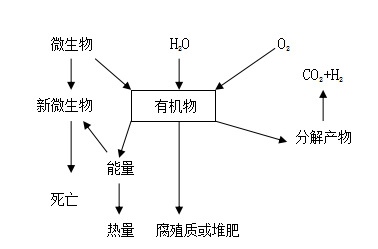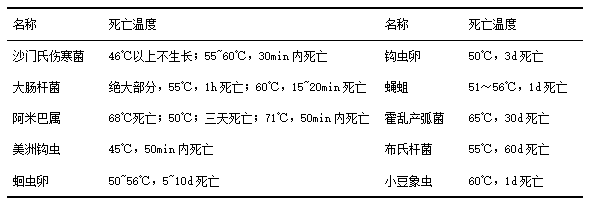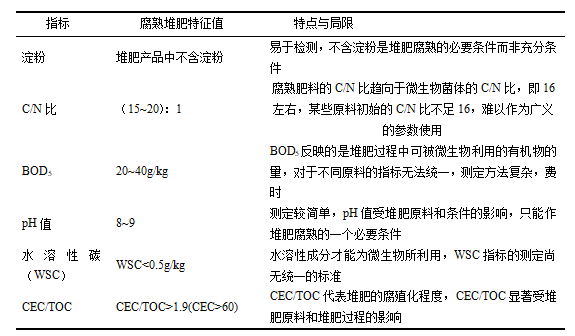Composting Overview
Composting Overview
1. Composting concept and history
Composting is a process of transforming potentially harmful organic matter into harmless organic fertilizer under artificially controlled aerobic conditions, under certain moisture, C/N and ventilation conditions, through the fermentation of microorganisms. In this process, organic matter is transformed from an unstable state into a stable humus substance. The product of this process is called a compost product.
The composting process is part of the ecological process of the earth's surface and continues to play an important role, such as the decomposition of dead leaves, weeds, bark and other semi-solid organic matter remaining on the surface before further participating in the material and energy cycle.
Although composting technology is a science and technology that has only been developed in recent decades, the original composting method has appeared very early, and farmers have been using this method to make soil organic fertilizer for hundreds of years. For example, human feces, inedible rotten leaves, animal manure, waste garbage, etc. are composted into fertilizer. China has had a mature fertilizer production process since ancient times. For example, the accumulation of manure is explained in ancient works such as "Qi Min Zhishu" and "Book of Agriculture". Therefore, Chinese farmers have the tradition of accumulating fertilizer to make fertilizer since ancient times, and attach great importance to the cultivation of organic fertilizer on the soil.
Second, the scientific truth of composting
According to the need for oxygen supply during the composting process of organic materials, the composting of organic materials such as livestock and poultry manure can be divided into aerobic compost and anaerobic composting. Aerobic composting is a composting process under compost ventilation and ventilation conditions, when oxygen is present, and the compost compost temperature is high, generally at 55~65 °C, sometimes up to 80 °C, so it is also called high temperature composting. The latter is a composting method without ventilation and oxygen supply during the composting process. Anaerobic composting takes a long time and is greatly affected by natural conditions, and this process is generally used to produce biogas.
1. Aerobic compost (also known as high-temperature compost)
Aerobic composting is to rot under conditions of oxygen, relying on microorganisms that need oxygen. In the composting process, aerobic microorganisms through their own reproduction and growth needs, while digesting organic materials such as livestock and poultry manure and kitchen waste, and obtaining the energy and nutrients required for microbial growth and reproduction, so that livestock organic materials are rotted. (See Figure 2-1)

Figure 2-1 Composting process
The composting process is generally divided into three stages, namely the heating stage, the high temperature stage and the cooling stage. Each stage hosts different bacteria, actinomycetes, fungi, and protozoa. At each stage, microorganisms utilize organic materials and stage digests as a source of food and energy until the formation of humus is stabilized. In the process of converting and utilizing organic materials, a large amount of heat will be formed, so that the pile temperature rises rapidly, reaching 60~70 °C. Generally speaking, the composting temperature above 60 °C for more than 3 days can kill parasites (eggs), pathogenic microorganisms and weed seeds in the feces to achieve the purpose of harmlessness (see Table 2-3). At this time, humus begins to form and the compost material enters a "stable state". After the high temperature phase, the oxygen demand in the compost gradually decreases. At this time, the temperature continues to drop, and the microorganisms break down the organic matter to complete the compost.
Table 2-3 Death temperature of several common germs and parasites

2. Anaerobic composting principle
Anaerobic composting is the decomposition of microorganisms (mainly anaerobic bacteria) that do not require oxygen under conditions without oxygen, which goes through two stages: acidic and alkaline fermentation stages. At the beginning of decomposition, the decomposition products in microbial activity are acidic substances, at this stage, organic acids accumulate in large quantities, pH gradually decreases, and another group of microorganisms collectively known as methane bacteria begin to decompose organic acids and alcohols, and the products are mainly methane and carbon dioxide. With the reproduction of methane bacteria, organic acids decompose rapidly, and the pH value rises rapidly, and this stage of decomposition is called the alkaline fermentation stage.
3. Compost ripeness and judgment index
Rot maturity is the degree of compost decay, that is, the organic matter in the compost reaches a stable degree through the process of mineralization and humusation. Rot maturity as a quality indicator to measure compost products has long been proposed, its basic meaning is: through the action of microorganisms, composted products should be stable, harmless, and do not have adverse effects on the environment; The use of compost products does not affect the growth of crops and the ability of soil to cultivate.
After the unrotted compost is applied to the soil, it can cause the vigorous activity of microorganisms leading to oxygen deficiency, resulting in an anaerobic environment, and will also produce a large number of harmful components, which will seriously poison the root system of plants and affect the normal growth of crops.
Over the years, many researchers at home and abroad have conducted a variety of studies and discussions on the degree of decay, and put forward many criteria for judging the degree of compost decay.
(1) Physics evaluation index
Physical indicators are more intuitive and easy to monitor with the change of composting process, and are often used to qualitatively describe the state of the composting process, but it is not easy to quantitatively describe the degree of compost decay.
Table 2-4 Physical indicators of compost decay evaluation

(2) Chemical evaluation indicators
Since physical indicators can only directly reflect the composting process, the compost decay is often evaluated by analyzing the changes in the chemical composition or properties of the compost during the composting process.
Table 2-5 Chemical indicators for compost decay evaluation

(3) Biological evaluation indicators
The activity changes of microorganisms in the pile and the effect of compost on plant growth were used to evaluate the maturity of compost, which mainly included respiration, biological activity and seed germination rate.
Table 2-6 Biological indicators of compost decay evaluation

Physical indicators are easy to monitor to qualitatively describe the state of the composting process; Chemical methods provide basic data for composting, with the analysis of water-soluble organic compounds and C/N being the most commonly used. Biological indicators can comprehensively reflect the practicality of compost, and are generally used to judge the stability of compost. Among them, respiration is a more mature method to assess the stability of compost. The determination of germination index is relatively fast and easy, and is generally only used to assess the decay of compost. The determination of biological indicators takes a long time and has a large workload, and is rarely used alone to judge the maturity of compost. The correct evaluation of decay is a complex issue, and the determination of some evaluation parameters is still controversial. Using a variety of analysis methods to measure multiple indicators, and then comprehensively analyzing the decay of compost according to these indicators, combining chemical indicators and biological indicators to evaluate the ripe degree is the most commonly used method at present.





